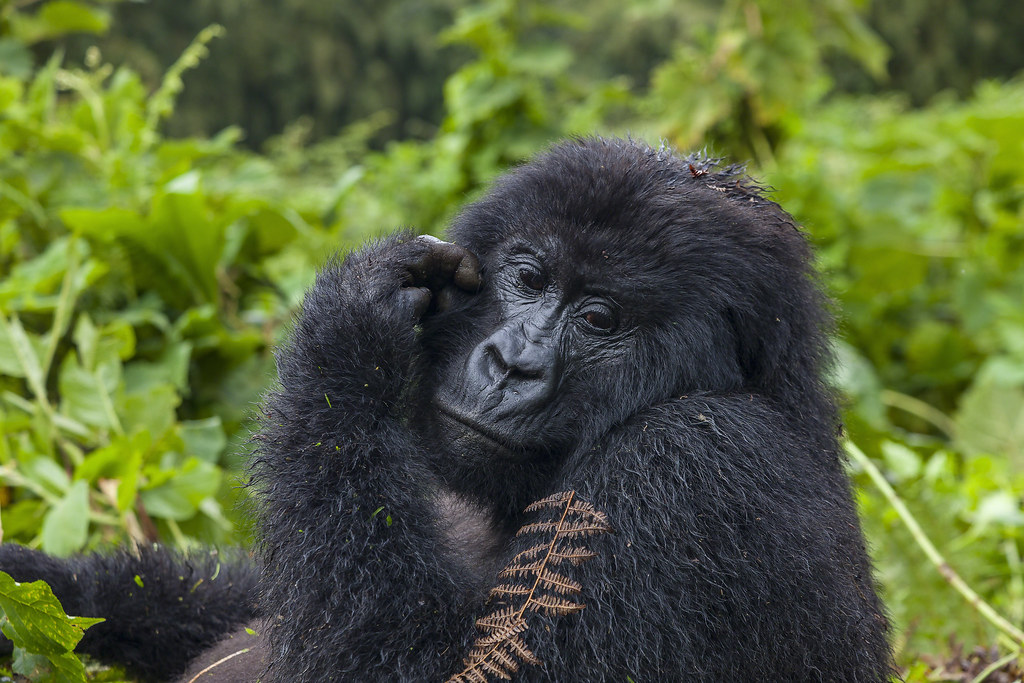Exploring the Reasons Behind the Endangerment of Mountain Gorillas
Endangerment of mountain gorillas facts – How many mountain gorillas are left – Where do mountain gorillas live – Why are gorillas endangered – Mountain gorilla threats – What do mountain gorillas eat – Why are mountain gorillas important – Mountain gorilla interesting facts
What makes mountain gorillas at risk of extinction? What challenges do they encounter? Mountain gorillas, a fascinating subspecies of eastern gorillas, inhabit the breathtaking Virunga Massif, a region that stretches across the stunning landscapes of Rwanda, Uganda, and the Democratic Republic of Congo.
In the 19th century, gorillas teetered on the edge of extinction, yet through dedicated conservation efforts, their plight took a turn for the better, leading to their removal from the IUCN’s Red List of Endangered Species of Primates.
At present, the global population of mountain gorillas stands at just over 1000 individuals. Bwindi Impenetrable National Park, nestled in the heart of southwestern Uganda, is a vibrant sanctuary for half of this remarkable population.
Consequently, it stands out as the ultimate spot for witnessing mountain gorillas in Africa.
What Makes Mountain Gorillas at Risk
Approximately 17% of mountain gorillas are safeguarded, while the rest roam freely in the wild, encountering numerous challenges.
Humans often pose the greatest threat to mountain gorillas. Poachers hunt them for a range of reasons, including bushmeat.
While leopards might sometimes feast on gorilla meat, it is quite rare for them to successfully hunt mountain gorillas.
Moreover, diseases such as Ebola present a serious danger to mountain gorillas, and their low birth rate means that any loss is a major worry.
Here are a few reasons that highlight the perilous situation of mountain gorillas and the challenges they encounter:
Challenges Facing Mountain Gorillas
Human encroachment into gorilla habitats through settlement, farming, deforestation, agriculture, and industrial development has compelled mountain gorillas to seek refuge at higher elevations. The challenging weather at these heights can bring about ailments such as pneumonia, complicating the struggle for survival.
Mountain gorillas face risks from human diseases like flu, scabies, and pneumonia. More interactions between humans and gorillas heighten the chances of spreading diseases. Keeping an 8-meter distance while trekking among gorillas is essential for their protection, as these incredible primates do not have the immunities needed to fight off diseases when they come into contact with humans. Ebola is a prevalent disease that impacts mountain gorillas.
Poaching: Mountain gorillas can occasionally find themselves ensnared in traps intended for other creatures such as small antelopes and bushbucks. They have also been pursued as trophies, yet they cannot endure in captivity and can only flourish in elevated regions.
The pet trade plays a role in the poaching of mountain gorillas. Visitors provide significant amounts of money to residents to obtain mountain gorillas, which are subsequently kept as companions in private residences or animal sanctuaries. However, these gorillas cannot flourish in such an environment.
Bushmeat: Certain people view gorilla meat as a symbol of status and it is highly sought after in the marketplace. This demand has resulted in the tragic loss of mountain gorillas. Militia groups might find themselves relying on gorilla meat for sustenance, especially in times of food scarcity.
Traditional medicine: Healers and magicians hold the belief that specific parts of mountain gorillas possess magical properties for charms. They hunt mountain gorillas to acquire these body parts, which they subsequently supply to clients. Nonetheless, there is a lack of scientific evidence backing the efficacy of these body parts as charms.
Oil and gas exploration: European oil and gas companies have secured concessions in Virunga National Park in Congo, endangering the safety of mountain gorillas. The growth of mining activities in the park might open doors to increased poaching opportunities. Virunga stands out as one of the rare national parks in the world dedicated to safeguarding mountain gorillas.
Political and civil turmoil: The ongoing political turmoil, particularly in the Democratic Republic of Congo, poses a significant risk to the mountain gorillas. Even after the refugees departed from the park in the 1990s, their impact resulted in an increase in mountain gorilla killings for meat. Some say that gorilla meat offers a unique flavor, making it highly desirable.
The challenges highlight the crucial need for continuous conservation initiatives to safeguard mountain gorillas and their environments.

